Abstract
Haemophilus parasuis and Streptococcus suis are both major causes of losses during the nursery period, especially in herds using the segregated early weaning system. In this system, only a few piglets may be colonized with the herd's prevalent systemic strain, which results in infection of naive penmates late in the nursery. In view of these factors, the objectives of this study were: (1) to evaluate the early colonization of piglets with the farm's prevalent systemic strain of H. parasuis and S. suis as an alternative method for disease prevention; and (2) to evaluate 2 different protocols for experimental colonization: direct colonization of piglets and colonization of piglets through nose-to-nose contact with inoculated sows. Haemophilus parasuis and S. suis isolates recovered from diseased nursery pigs were characterized by the rep-PCR technique and the herd's prevalent strains were used for colonization. Piglets in the experimentally colonized groups were inoculated at 5 days of age by the oral route using a spray pump. Sows were colonized at 2 weeks prior to farrowing using a similar protocol. Although both colonization protocols were successful in getting the piglets colonized, direct inoculation of 5-day-old piglets with the herd's systemic strains of H. parasuis and S. suis tended to be more effective in reducing the morbidity and the mortality than the colonization of piglets by nose-to-nose contact with inoculated sows.
Full text
PDF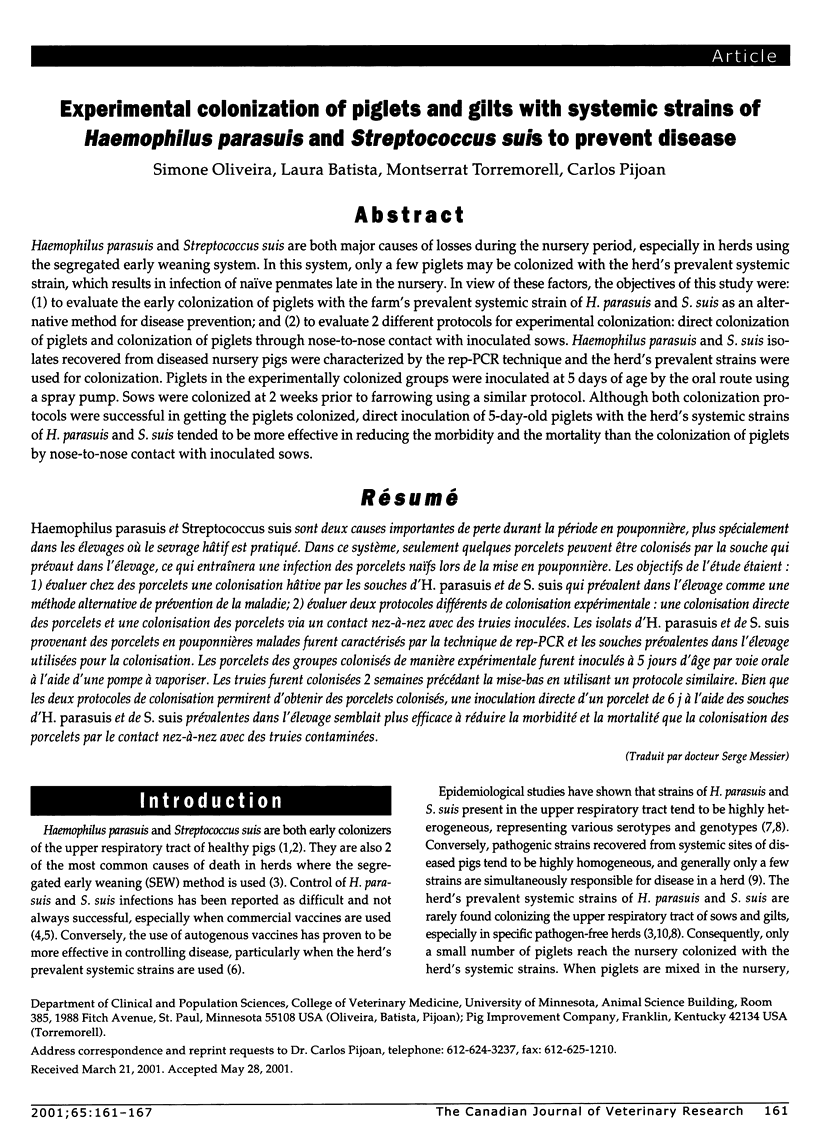
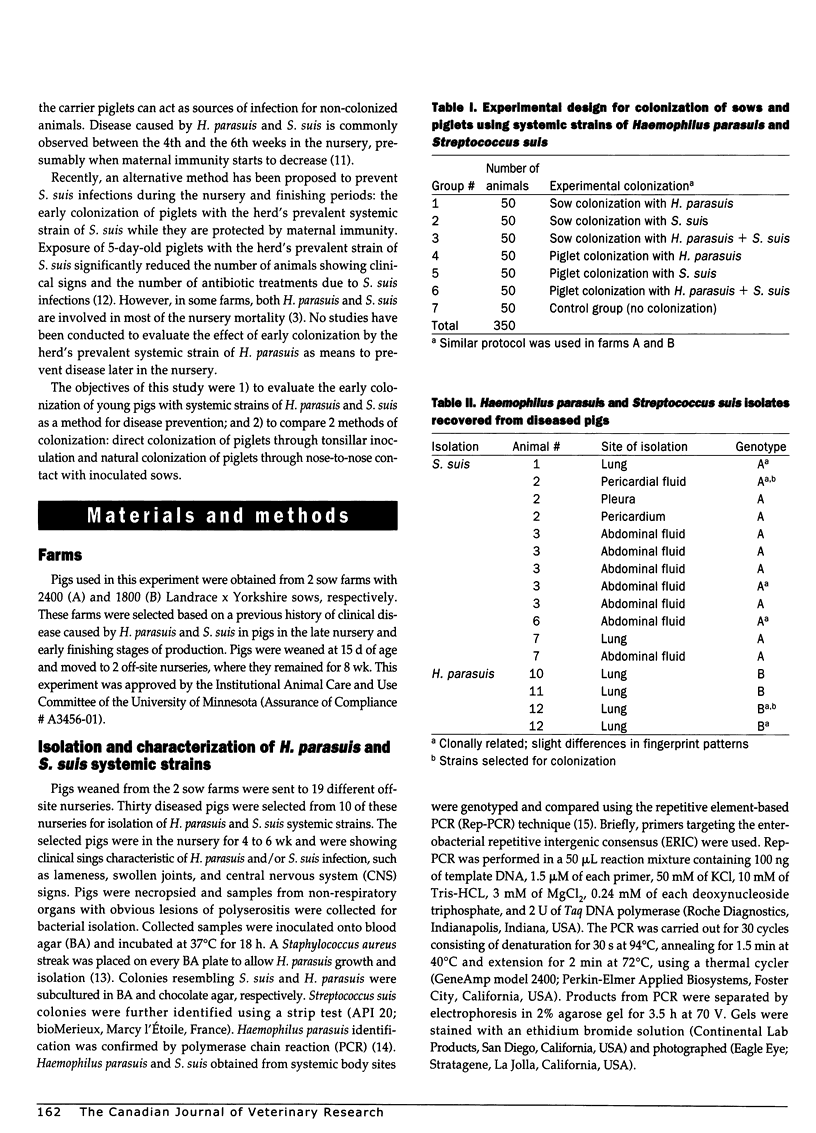
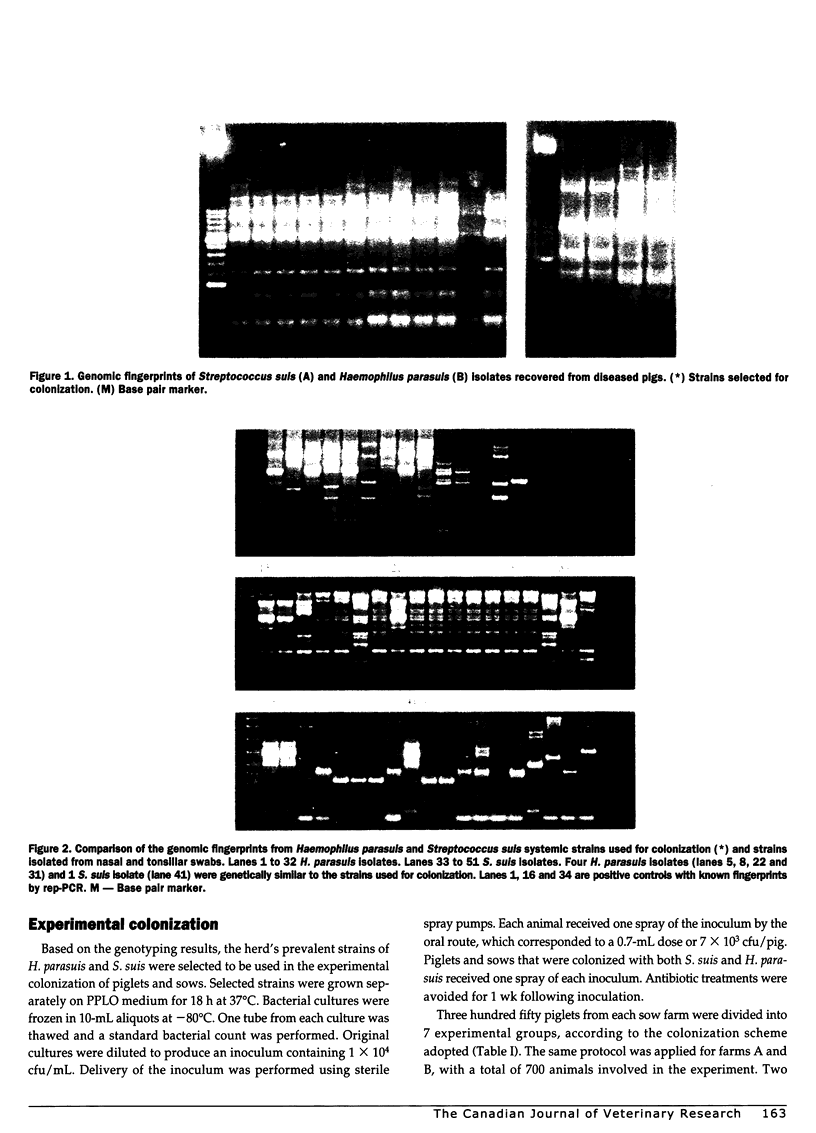
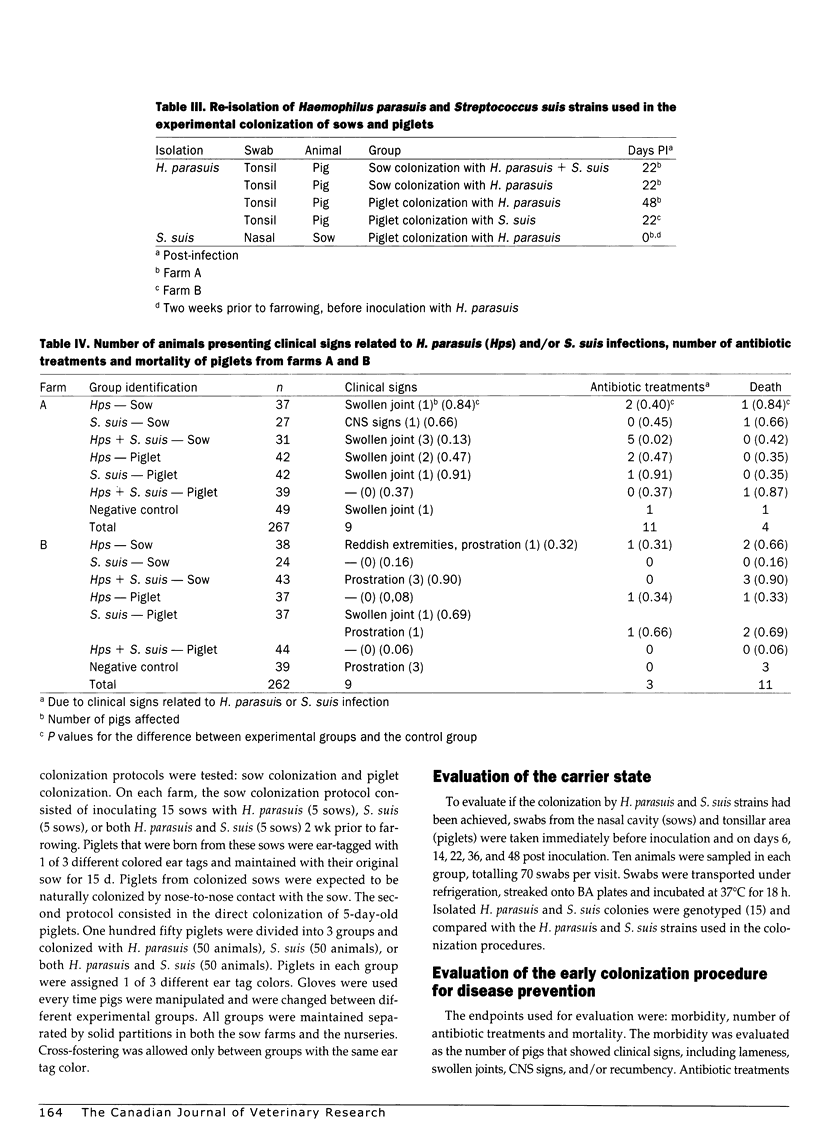
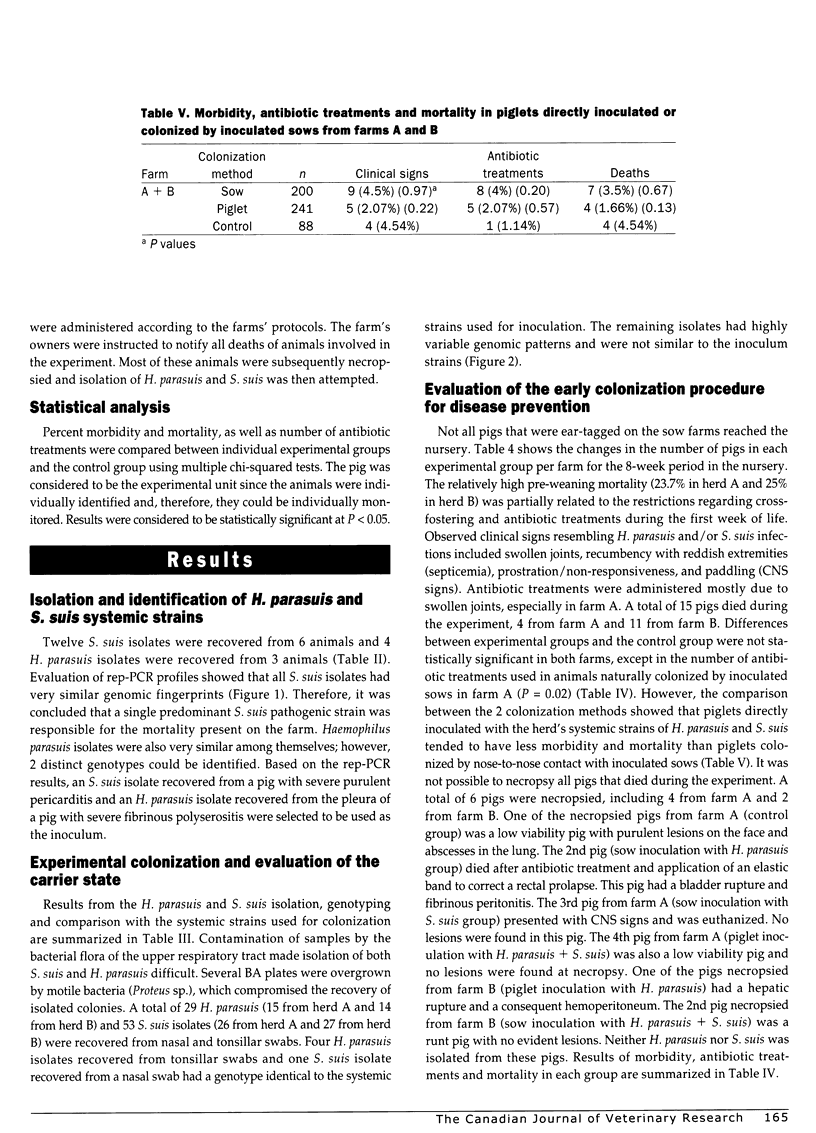
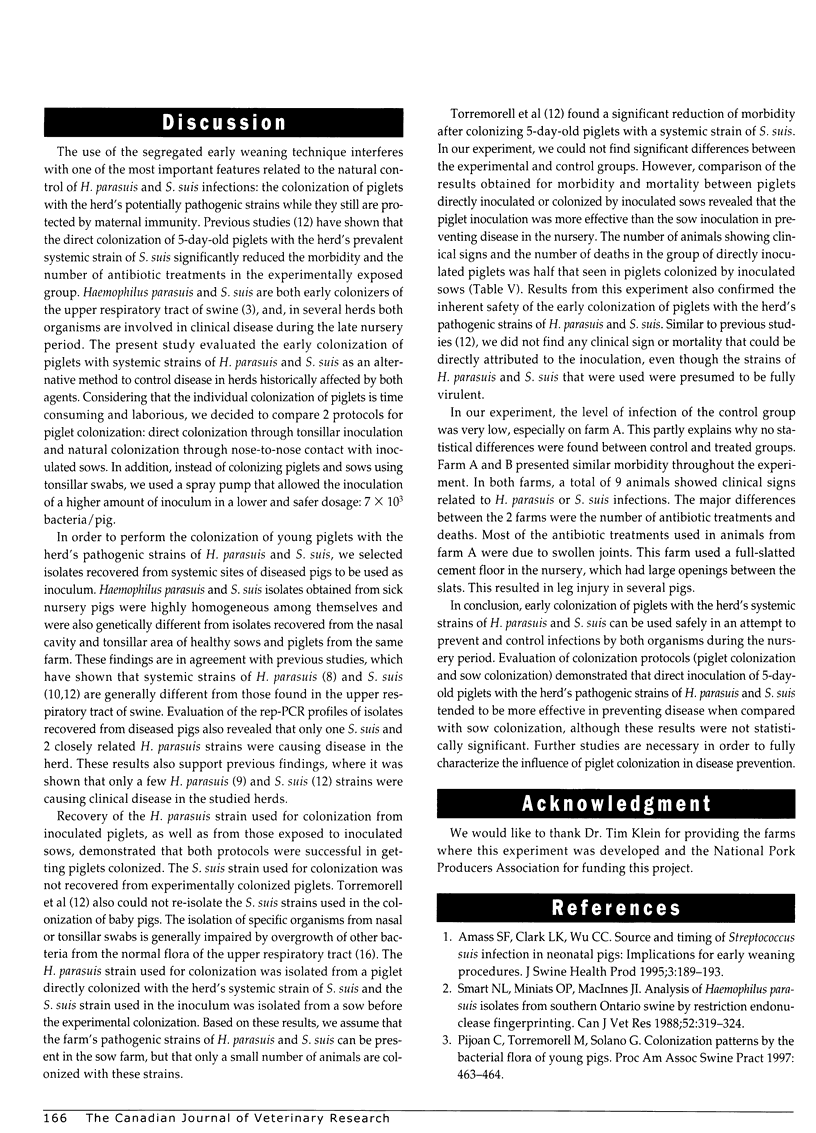
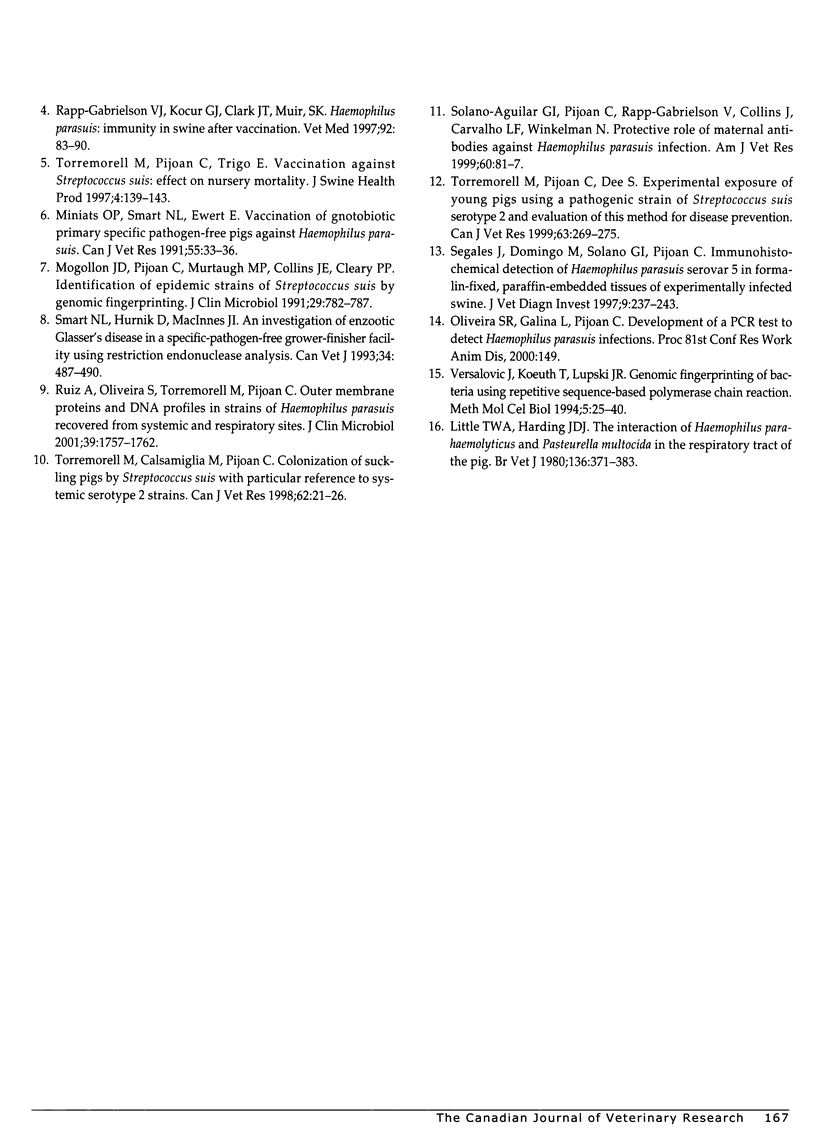
Images in this article
Selected References
These references are in PubMed. This may not be the complete list of references from this article.
- Little T. W., Harding J. D. The interaction of Haemophilus parahaemolyticus and Pasteurella multocida in the respiratory tract of the pig. Br Vet J. 1980 Jul-Aug;136(4):371–383. doi: 10.1016/s0007-1935(17)32240-6. [DOI] [PubMed] [Google Scholar]
- Miniats O. P., Smart N. L., Ewert E. Vaccination of gnotobiotic primary specific pathogen-free pigs against Haemophilus parasuis. Can J Vet Res. 1991 Jan;55(1):33–36. [PMC free article] [PubMed] [Google Scholar]
- Mogollon J. D., Pijoan C., Murtaugh M. P., Collins J. E., Cleary P. P. Identification of epidemic strains of Streptococcus suis by genomic fingerprinting. J Clin Microbiol. 1991 Apr;29(4):782–787. doi: 10.1128/jcm.29.4.782-787.1991. [DOI] [PMC free article] [PubMed] [Google Scholar]
- Ruiz A., Oliveira S., Torremorell M., Pijoan C. Outer membrane proteins and DNA profiles in strains of Haemophilus parasuis recovered from systemic and respiratory sites. J Clin Microbiol. 2001 May;39(5):1757–1762. doi: 10.1128/JCM.39.5.1757-1762.2001. [DOI] [PMC free article] [PubMed] [Google Scholar]
- Segalés J., Domingo M., Solano G. I., Pijoan C. Immunohistochemical detection of Haemophilus parasuis serovar 5 in formalin-fixed, paraffin-embedded tissues of experimentally infected swine. J Vet Diagn Invest. 1997 Jul;9(3):237–243. doi: 10.1177/104063879700900303. [DOI] [PubMed] [Google Scholar]
- Smart N. L., Hurnik D., Macinnes J. I. An investigation of enzootic Glasser's disease in a specific-pathogen-free grower-finisher facility using restriction endonuclease analysis. Can Vet J. 1993 Aug;34(8):487–490. [PMC free article] [PubMed] [Google Scholar]
- Smart N. L., Miniats O. P., MacInnes J. I. Analysis of Haemophilus parasuis isolates from southern Ontario swine by restriction endonuclease fingerprinting. Can J Vet Res. 1988 Jul;52(3):319–324. [PMC free article] [PubMed] [Google Scholar]
- Solano-Aguilar G. I., Pijoan C., Rapp-Gabrielson V., Collins J., Carvalho L. F., Winkelman N. Protective role of maternal antibodies against Haemophilus parasuis infection. Am J Vet Res. 1999 Jan;60(1):81–87. [PubMed] [Google Scholar]
- Torremorell M., Calsamiglia M., Pijoan C. Colonization of suckling pigs by Streptococcus suis with particular reference to pathogenic serotype 2 strains. Can J Vet Res. 1998 Jan;62(1):21–26. [PMC free article] [PubMed] [Google Scholar]
- Torremorell M., Pijoan C., Dee S. Experimental exposure of young pigs using a pathogenic strain of Streptococcus suis serotype 2 and evaluation of this method for disease prevention. Can J Vet Res. 1999 Oct;63(4):269–275. [PMC free article] [PubMed] [Google Scholar]




